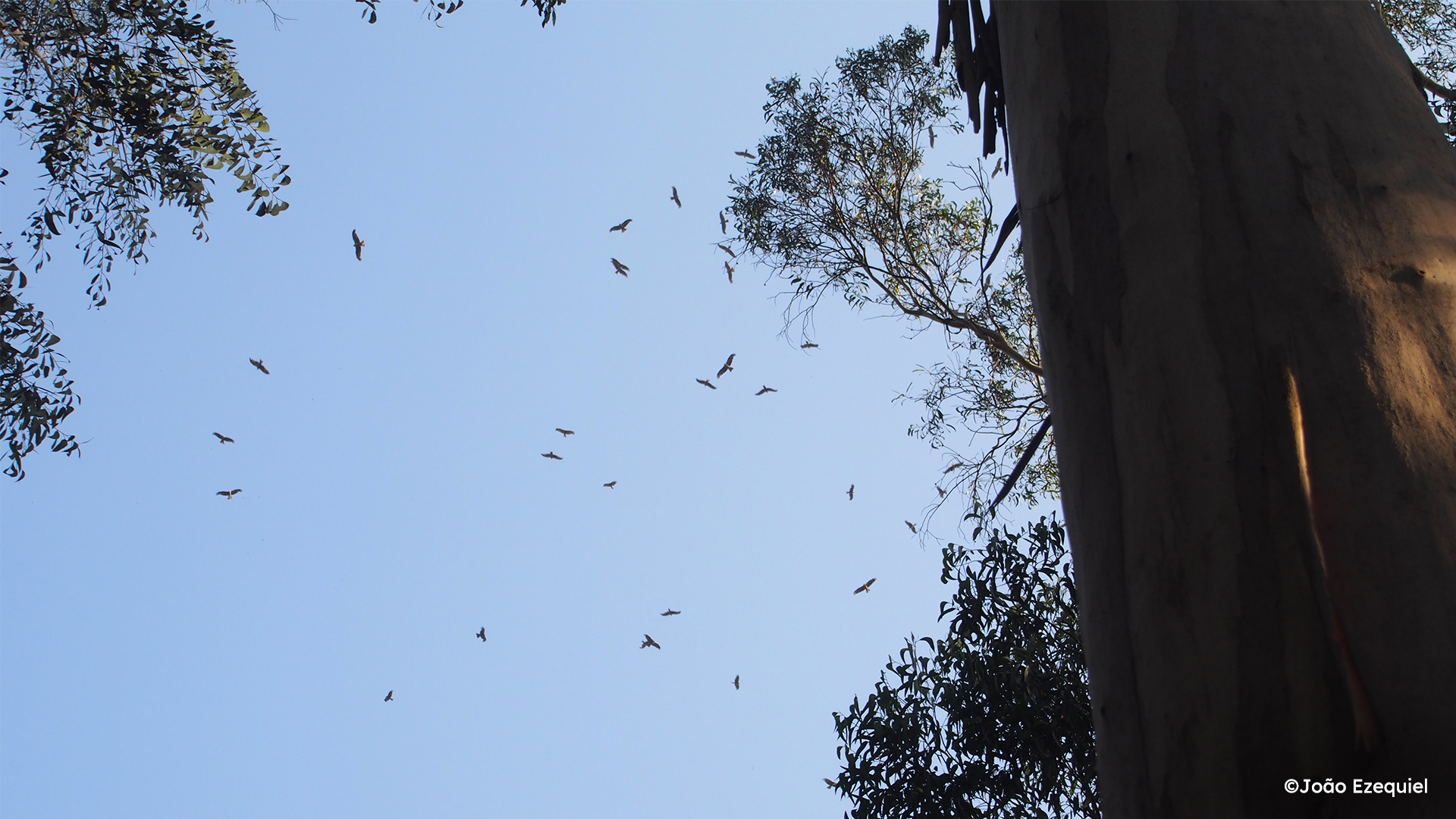The black kite (Milvus migrans) is one of the most impressive and emblematic birds of prey that can be found in the skies over Portugal. This fascinating species belongs to the Accipitridae family and is renowned for its impressive wingspan, agile flight and vital role in the ecosystems it inhabits.
The black kite, or black millet, has a dark plumage ranging from dark brown to black, a lighter-coloured head, splashes of grey and a strong, black curved beak. Its reddish-brown or even black breast, and the long, cut-out brown forked tail – earning it the epithet cod tail – are some of the features helping us identify it. With long, narrow, curved wings and a wingspan reaching up to six feet, this is a large species flying in the Portuguese skies.
The black kite has excellent flight skills and quickly changes direction when necessary, namely when spotting prey. It travels at low altitude and lightly, and we can see it chasing other birds in the skies, causing them to lose the food they have captured. This species can also be seen as it soars in the skies taking advantage of updrafts.
Whereas these birds choose tropical and mild temperature regions (Eurasia, Africa and Australia) in the rest of the world to live in, in Portugal they can be seen virtually all over the country, from north to south, coming from sub-Saharan Africa to protect from the winter. In Portugal, their numbers are significant in the Alentejo provinces and in the Central region of the country and they are practically absent in Extremadura and the Algarve provinces.
Versatile, the black kite adjusts to a wide range variety of habitats, from forests, cork oak or holm oak forests to coastal areas and urban areas, namely dumps and landfills, as long as it finds trees in which it can build its nest, in the vicinity of watercourses and wetlands, such as reservoirs, dams and plains. It was found that the black kite prefers wetlands and riparian ecosystems, breeding along rivers and tributaries, namely the Mondego, Tagus, Douro, Tâmega and Vouga rivers.
It is a monogamous and usually solitary species, sometimes forming large flocks, taking advantage of thermal currents flying side-by-side with other species, such as the stork. In the breeding season, prefers to build its nests in the same area, creating colonies. It spends many years with the same specimen; however, in the case of migratory populations, this monogamy is thought to be seasonal. It nests only in mainland Portugal between March and June and lays the eggs in April.





